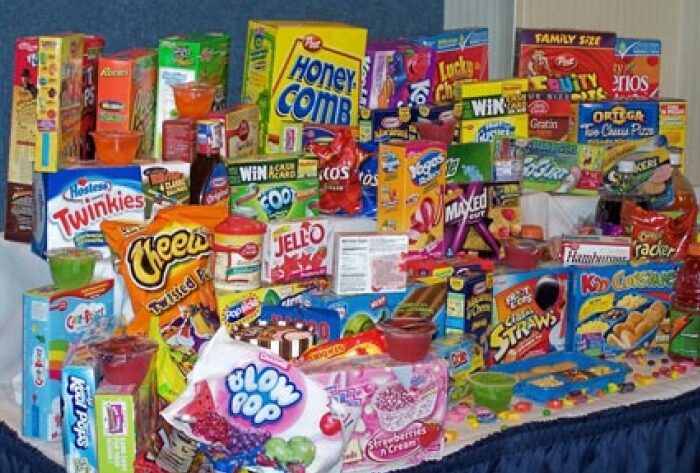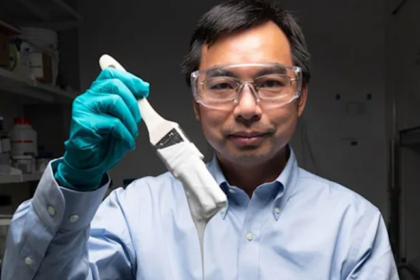The bright colors of candies, cereals, snack foods, and beverages are often created using synthetic chemical dyes. While these artificial food dyes make foods appear more vibrant and appealing, they come with concerning health risks.
Research has linked commonly used food colorings like Red 40, Yellow 5, and Blue 1 to a range of problems including allergic reactions, hyperactivity in children, cancer, and neurotoxicity. Despite these known dangers, artificial dyes continue to be widely used in the food supply, with children consuming the highest amounts.
In this article, we will explore the disturbing health impacts of the six most common artificial food dyes. We will look at how these chemical additives can harm the brain, body, and behavior, especially in developing children.
You may be shocked to learn just how toxic these FDA-approved food colorings can be. We’ll also uncover how and why artificial dyes have proliferated in the food supply, and what you can do to avoid them.
By becoming aware of the stealthy health dangers lurking in artificial food dyes, you can make informed choices to protect yourself and your family.
History Of Artificial Food Dyes
The artificial colors used to dye foods today have concerning origins and histories. The first synthetic food dyes were derived from coal tar in the 1800s. Coal tar was a cheap petroleum byproduct that contained over 10,000 different chemical compounds.
While it was readily available, it was clearly not intended for human consumption. Later, petroleum became the base for developing modern food dyes. This inherently poses safety concerns, as materials derived from coal tar or petroleum were never meant to be ingested.
Beyond their questionable origins, many synthetic food dyes have come under scrutiny because of adverse effects seen in animal studies. Some dyes previously used in foods were found to be carcinogenic when fed to lab animals.
These include contaminants found in Red #2, Red #4, Yellow #1, Yellow #3, and others. This led to bans on such dyes in the 1970s. However, many dyes with inconclusive safety data continue to be approved for use in foods today.
Proper long-term testing in humans is lacking for most dyes currently in use. Meanwhile, synthetic dyes with clean safety records, like Blue #1, have also been linked to allergies, hypersensitivity, and other effects in sensitive individuals.
The history of food dyes is rife with controversy and safety concerns thanks to their crude industrial origins and association with adverse health effects in animal studies. Despite ongoing concerns, synthetic dyes remain common additives found in many processed foods today. This highlights the importance of consumers being aware of potential risks.
Why Are Artificial Food Dyes Still Allowed In Our Food?
The short answer is that it sells. The food industry will argue that Americans want artificial food dyes in their food and that we have become accustomed to foods looking a certain way.
For instance, when picking out an orange, consumers choose the most vibrant-looking orange. But, most consumers are missing essential information to make informed decisions, like the fact that the bright-looking orange is sprayed with food dyes to make it look bright and fresh.
The food industry is taking advantage of adding these cheap processed dyes to sell more food. Just walk down the cereal aisle, and you’ll notice how those brightly colored cereals at perfectly placed at eye level for grade school-aged children.
In fact, in the article “43% Of Products Marketed To Kids Are Artificial Dyes, Study Finds” from The Center for Science in the Public Interest, “Candies marketed to kids had the highest proportion of products with artificial dyes (96 percent) followed by fruit-flavored snacks (95 percent), drink mixes and powders (90 percent), and frozen breakfast foods (86 percent).”
Targeting bright-colored foods coupled with cartoon characters or superheroes to promote the latest in cheap processed food to our children.
Safety Of Artificial Food Dyes
This review highlights significant health concerns around the nine synthetic food dyes currently approved for use in the United States. The dangers posed vary across dyes, but include findings like cancer risk, contamination with known carcinogens, hypersensitivity reactions, and genotoxicity indicating DNA damage that could lead to mutations or cancer.
Specifically, Red Dye #3 has been found to cause cancer in animal studies. Other concerning findings show that dyes like Red #40, Yellow #5, and Yellow #6 contain contaminants linked to cancer, such as benzidine. At least four dyes – Blue #1, Red #40, Yellow #5, and Yellow #6 – have been associated with allergy-like hypersensitivity reactions in some people. Numerous studies on Yellow #5 also found genotoxic effects in microbiological and rodent tests, suggesting this dye may damage DNA and cause mutations.
Heal Your DNA Naturally With Radiate 21
Click Here To Learn More
While dyes like Citrus Red #2 and Orange B are not in widespread use currently, past toxicity data on them also indicates potential safety issues. Taken together, the animal studies, chemical contaminants, and hypersensitivity reactions seen provide worrying evidence that synthetic food dyes may not be as safe as their FDA approval suggests.
Given the lack of adequate testing for many dyes, evidence pointing to carcinogenic and DNA-damaging effects, and the fact that dyes provide no health benefit, the review argues all currently approved dyes should be removed from foods. The authors recommend regulatory authorities require more thorough, independent toxicity testing on dyes and exercise more caution in re-approving them. In the future, it’s suggested only well-tested food colorings with demonstrated safety be allowed in the food supply.
Artificial Dyes Used In The USA & Their Health Risks
Red Dye #3 (Erythrosine)
- Associated with increased incidence of thyroid tumors in rats.
- Banned in 1990 for use in foods, except for certain applications like cherries and cake decorating.
- Still used in some medications and personal care products.
Red Dye #40 (Allura Red AC)
- One of the most widely used food dyes.
- Widely used in beverages like sports drinks, sodas, juices, ice teas. Also used in cereals, candy, popsicles, icings, snack foods.
- May cause allergic reactions, hypersensitivity, and links to cancer.
Yellow Dye #5 (Tartrazine)
- Also heavily used in foods/beverages. Known allergen and can provoke asthma attacks, hives, and aggression in individuals.
- Linked to adrenal tumors, thyroid effects, and hyperactivity in animal studies.
- Genotoxic – can damage DNA and cause mutations.
Yellow Dye #6 (Sunset Yellow)
- Contaminated in the past with benzidine and other carcinogens, unclear if still an issue.
- Used in candy, canned fruit, popsicles, lemonade, sausage, hot dogs, cereals.
- Limited studies, but some evidence of adrenal effects in animals.
- Banned in some countries due to health concerns.
Green Dye #3 (Fast Green)
- Very limited toxicity data publicly available, most studies unpublished.
- Less common, but found in canned green vegetables, jellies, sausages, seafood.
- Limited evidence indicates adrenal effects in rodents.
- One of the least studied synthetic food dyes.
Blue Dye #1 (Brilliant Blue)
- Hypersensitivity reactions reported in some individuals.
- Used in ice cream, canned processed peas, candy, popsicles, icings, sport drinks.
- Otherwise considered one of the safer dyes, but more research still needed.
Blue Dye #2 (Indigotine)
- Limited toxicity data available. Banned in some countries due to health concerns.
- Found in candy, ice cream, yogurt, custard powder, vitamins.
- Some evidence of adverse effects in animal studies.
Citrus Red Dye #2
- Limited current use, only for coloring Florida oranges.
- Only approved for use coloring orange peels.
- Caused urinary bladder tumors in animal studies.
Orange B Dye
- No longer approved for use in foods.
- Was found in hot dogs, cheeses in the past.
- Caused liver and kidney effects in animal studies.
The ubiquity of synthetic dyes in the modern food supply means many of us are frequently exposed to these controversial additives. While the use of artificial colors like Red 40 or Yellow 5 may seem harmless at first glance, a closer look reveals some alarming health concerns.
Animal studies indicate dyes can cause cancerous tumors, DNA damage, allergic reactions, and other toxic effects. Many dyes contain contaminants linked to cancer as well. Despite these dangers, lax regulation means artificial colorings approved decades ago remain in common use today.
The safety of ingesting petroleum-derived, synthetically produced dyes is questionable at best. Their continued presence in foods and beverages is irresponsible, particularly given their non-essential nature and use mainly for aesthetic appeal.
As consumers become more aware of the potential harm from artificial food dyes, pressure is mounting for both manufacturers and regulators to re-assess the ingredients we are exposed to on a regular basis. Transitioning away from hazardous dyes in favor of natural colors derived from real foods would be a positive step.
In the meantime, avoiding products containing synthetic dyes is one way to minimize your risk and protect your health. Read labels carefully, research questionable ingredients, and choose fresh, whole foods whenever possible. While occasional exposure to food dyes may not be a major concern for some, eliminating these additives is a smart precautionary step for you and your family’s wellbeing.






